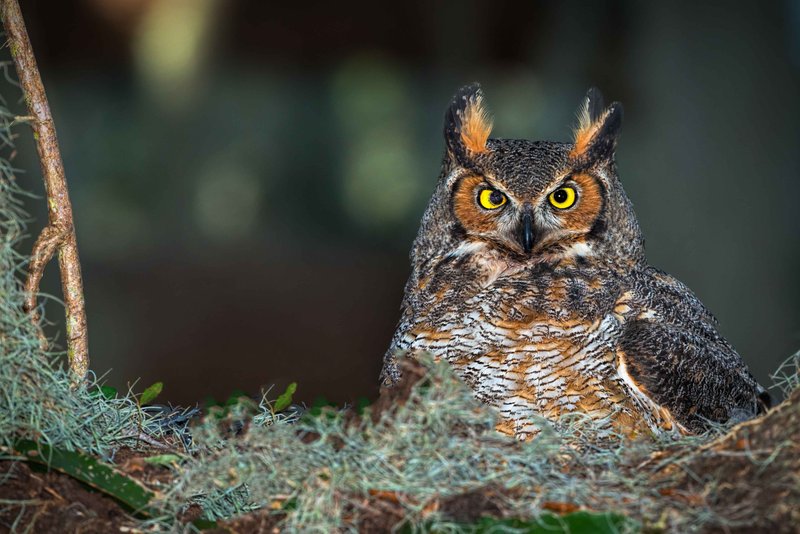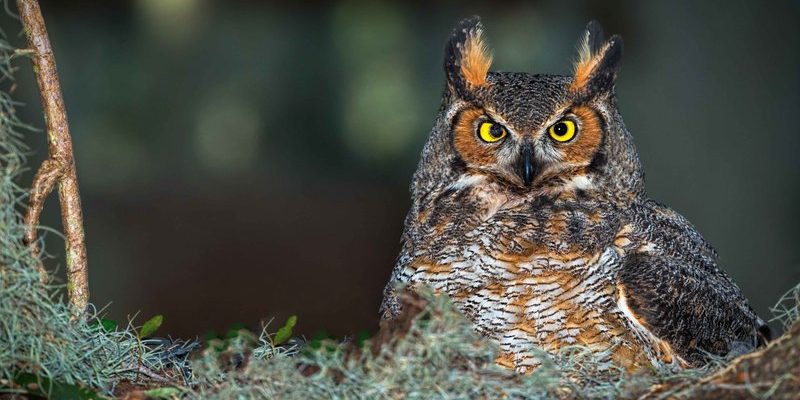
Imagine the Great Horned Owl as a guardian of the night, keeping a watchful eye over the forests, fields, and deserts where they live. Their presence signifies a healthy ecosystem, but with habitat loss, pollution, and climate change looming over them, their future is uncertain. Thankfully, many individuals and organizations are stepping up to protect this iconic bird. Let’s dive into the conservation efforts aimed at safeguarding the Great Horned Owl and what you can do to help.
Understanding the Threats to Great Horned Owls
The first step in conservation is understanding what challenges the Great Horned Owl faces. These owls are vulnerable to a mix of human activities and environmental changes. The most significant threats include:
- Habitat Destruction: Urban expansion and agricultural practices have led to the loss of natural habitats. When forests are cleared, owls lose their homes and hunting grounds.
- Pollution: Pesticides and heavy metals can accumulate in the food chain. Owls often consume rodents and other small animals that have ingested these toxins, leading to health issues and decreased reproductive success.
- Climate Change: Altered weather patterns can impact the availability of prey, breeding success, and migration patterns.
You might be wondering why each of these issues matters. Well, if Great Horned Owls are struggling, it often indicates larger problems within the ecosystem. They serve as a barometer for environmental health, meaning conservation efforts for them can benefit numerous other species.
Habitat Restoration Initiatives
One of the most effective ways to help Great Horned Owls is through habitat restoration. This involves rehabilitating damaged ecosystems, replanting native vegetation, and creating safe spaces where these owls can thrive. Many organizations are working tirelessly on these initiatives.
For example, in some areas, volunteers and wildlife groups are partnering with local governments to restore wetlands and forests. This not only provides shelter and hunting grounds for the owls but also supports other wildlife. By planting native trees and shrubs, they’re boosting biodiversity, which is essential for a balanced ecosystem.
You might find it interesting that some restoration projects also include creating artificial nests. These nests help provide safe breeding sites, especially in areas where natural nesting sites are scarce. By ensuring Great Horned Owls have a safe place to raise their young, conservationists are directly boosting their populations.
Education and Community Involvement
Education is a powerful tool in conservation. Many organizations run community programs to raise awareness about the importance of the Great Horned Owl and the simple steps individuals can take to help.
For instance, local wildlife centers often hold workshops or school programs to teach kids about these magnificent creatures. They might explain how to recognize owl calls or spot them in the wild. This information can create a sense of connection and responsibility toward wildlife and the environment.
Moreover, community involvement can have a significant impact. You may come across opportunities to participate in local clean-up events or habitat restoration days. These activities not only protect the owls’ habitats but also foster a stronger community spirit. When people work together to protect nature, it often leads to lasting change.
Research and Monitoring Populations
To effectively protect the Great Horned Owl, researchers are diving deep into studying their behaviors, populations, and health. Monitoring these factors helps scientists understand the challenges the owls face and how to address them.
Research initiatives often involve banding (marking) owls so researchers can track their movements and survival rates. This data is crucial for understanding whether conservation efforts are working. Scientists might explore aspects like breeding success, prey availability, and the impact of human activities on these birds.
For instance, studies have shown that in some areas where conservation efforts are concentrated, Great Horned Owl populations are rebounding. This positive feedback loop demonstrates how informed action can benefit these majestic birds. Plus, sharing this research with the public can inspire more people to get involved.
Legal Protections and Policies
Legal protections play a vital role in conservation efforts for the Great Horned Owl. In many regions, these owls are protected under laws that prevent hunting, trapping, and the destruction of their habitats.
For example, the Migratory Bird Treaty Act makes it illegal to harm migratory birds, including the Great Horned Owl. This creates a framework for conservationists to work within and offers a layer of security for the species.
However, enforcing these laws can be challenging. Issues like habitat destruction often fall through the cracks when local governments prioritize development. That’s why advocacy is essential. Conservation groups often lobby for stronger protections and policies that safeguard the owls’ habitats. You can support these efforts by staying informed, voting for pro-conservation policies, and amplifying the voices of organizations working for these birds.
How You Can Help Protect Great Horned Owls
You don’t have to be a wildlife biologist to make a difference. There are simple actions you can take to support the conservation of the Great Horned Owl:
- Support Local Conservation Groups: Consider donating time or money to organizations focused on protecting wildlife habitats.
- Participate in Citizen Science: Many programs allow you to contribute data about local wildlife sightings, helping researchers track owl populations.
- Spread the Word: Share information about Great Horned Owls on social media. You never know who might become inspired to take action!
By getting involved, you help create a community that values and protects wildlife, ensuring future generations can enjoy the wonders of the Great Horned Owl.
The Great Horned Owl is a remarkable symbol of our natural world. As we’ve explored, various conservation efforts—from habitat restoration and education to research and legal protections—are vital in safeguarding these majestic birds. By understanding what threatens them and actively participating in their conservation, we can help ensure that the guardian of the night continues to thrive for years to come.
So, the next time you gaze up at a Great Horned Owl perched in the twilight, remember that your actions can contribute to their protection. Together, we can create a world where these magnificent creatures are not just memories in textbooks but living symbols of a healthy and vibrant ecosystem.

